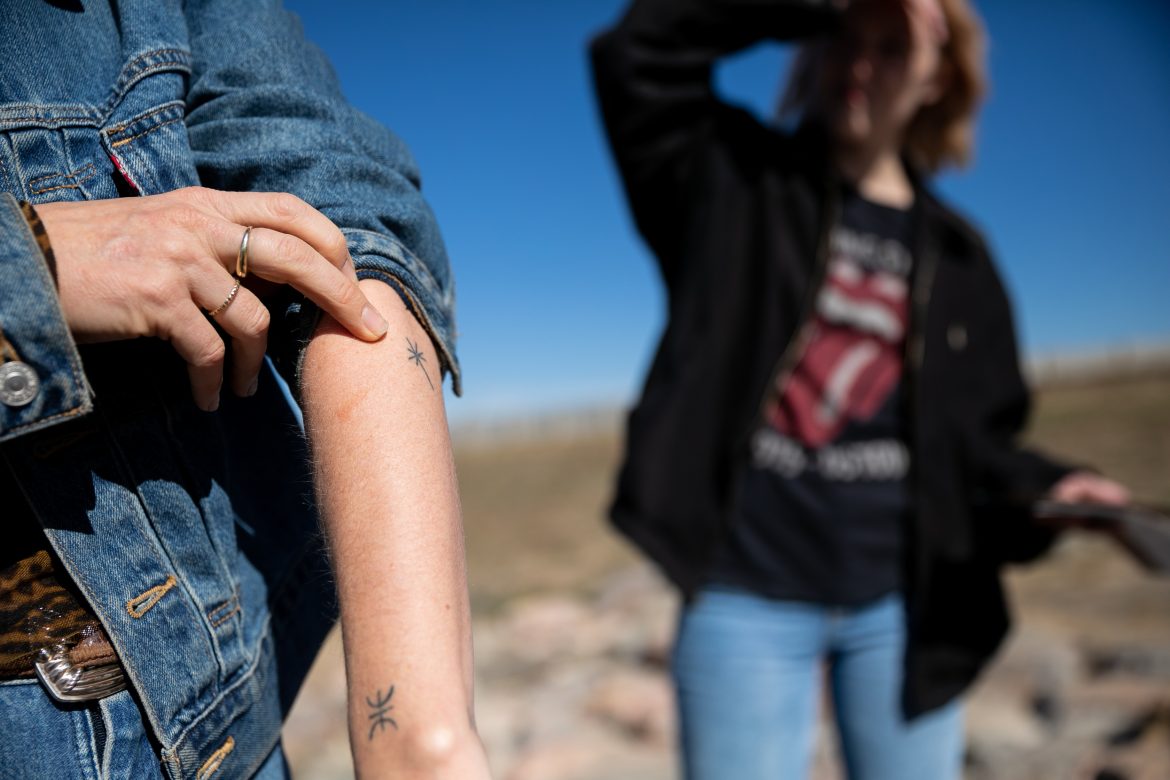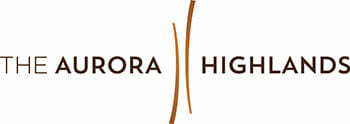CU alum Lisa Solberg installs new sculptures in Aurora development

Lisa Solberg talks about her sculpture art in Aurora, CO on Saturday, Oct. 24, 2022. (Io Hartman/CU Independent)
Near a sea of buildings under construction and beige grass dehydrated by the early-autumn sun, sits a set of three ancient-looking sculptures, surrounded by large, flat rocks and pools of water. In the center of the field, a rusty brown eight-pointed star has been painted on the rocks. Some of the corners point directly toward the sculptures, while others point toward symbols engraved in the rock.
This installation, the brainchild of University of Colorado Boulder alum Lisa Solberg, is the third one along the two-mile-long art walk at Hogan Park in Highlands Creek, one of the newest developments in Aurora, located about 20 minutes south of Denver International Airport and east of Downtown Denver. The neighborhood will eventually span 100 acres, with residential areas as well as hospitals, business parks and schools.
The other two installations include Hunter Brown’s “Lifeblood,” a 7,000-pound twisted ribbon sculpture, and Olivia Steele’s “Public Displays of Awareness,” which features traffic-like signs with inspirational messages such as “Love Yourself.”

Lisa Solberg points to the location of her sculpture art in Aurora, CO, on Saturday, Oct. 22, 2022. (Io Hartman/CU Independent)

Lisa Solberg’s sculpture art sits in what will be Aurora Highlands Parkway in Aurora, CO. (Image courtesy of the Aurora Highlands)
“[The three installations] are kind of like a time warp,” said Carla Ferreira, the director of on-site development and principal for the Aurora Highlands. “We’re going from super futuristic with Hunter’s to contemporary with Olivia’s and then a little bit ancient with Lisa’s.”
For her installation, Solberg wanted to reflect her spirituality by combining ancient and contemporary elements. She used stainless steel and concrete to create a timeless, antiquated structure, which contrasts with futuristic-looking mirrors beneath. Through this juxtaposition, she compares her work to a torii, a traditional Japanese gate that symbolically represents a shift from the mundane human world to a sacred space.
“This is supposed to be sacred ground in a way,” Solberg said. “[The sculptures] are supposed to look like it’s been here forever and also will be here forever.”
Solberg, who is currently based in New York City, graduated from CU Boulder in 2005 with a Bachelor of Fine Arts. Since then, she has received critical acclaim for her multi-disciplinary and multi-media artwork across various mediums, including painting, drawing, sculpture and performance art. Her work has been featured in museums around the U.S. and the world, including in Hungary, Italy, Germany, Singapore, England, Australia and the Netherlands.
In general, her sculptures tend to be abstract and conceptual with an antiquated aesthetic, and she often draws from recurring symbols — like those that appear in her Aurora installation. In fact, she even has several of these symbols tattooed on her body. She claims they represent liberation, a single moment of combustion and expansion.
“I feel like my purpose in life is to eliminate dogma from people’s minds, from their ancestral history and from their belief systems — to liberate them from that,” she said. “So, the symbols all came to me, or came through me, to try to instill a deeper awareness of that.”

Artist Lisa Solberg displays her self-designed tattoo that relates to her sculpture art in Aurora, CO, on Saturday, Oct. 24, 2022. (Io Hartman/CU Independent)
For Solberg, the appeal of large installations lies in the immersive experience for viewers. She doesn’t like to express herself through smaller, more digestible pieces of art.
“Even in college, I was making paintings that barely fit in my little cubicle studio,” she said. “I like one of a kind. I like the moment. I like people journeying to come see something or discover something that only exists here. You can’t replicate this.”
In addition, she believes installations make her work more accessible for the general public.
“I don’t want my work just ending up in rich people’s homes and being only for that crowd,” Solberg said. “This feels like an outdoor museum [for] whoever is walking through the park.”
Ferreira shares similar goals for the art walk at Highlands Creek, which she hopes will provide residents and visitors alike with a memorable and impactful experience.
“Art should be in our everyday lives,” Ferreira said. “Bringing art into the suburbs and having it be free and open to the public 365 days a year is really important. I feel like it’s something everybody should have access to.”








